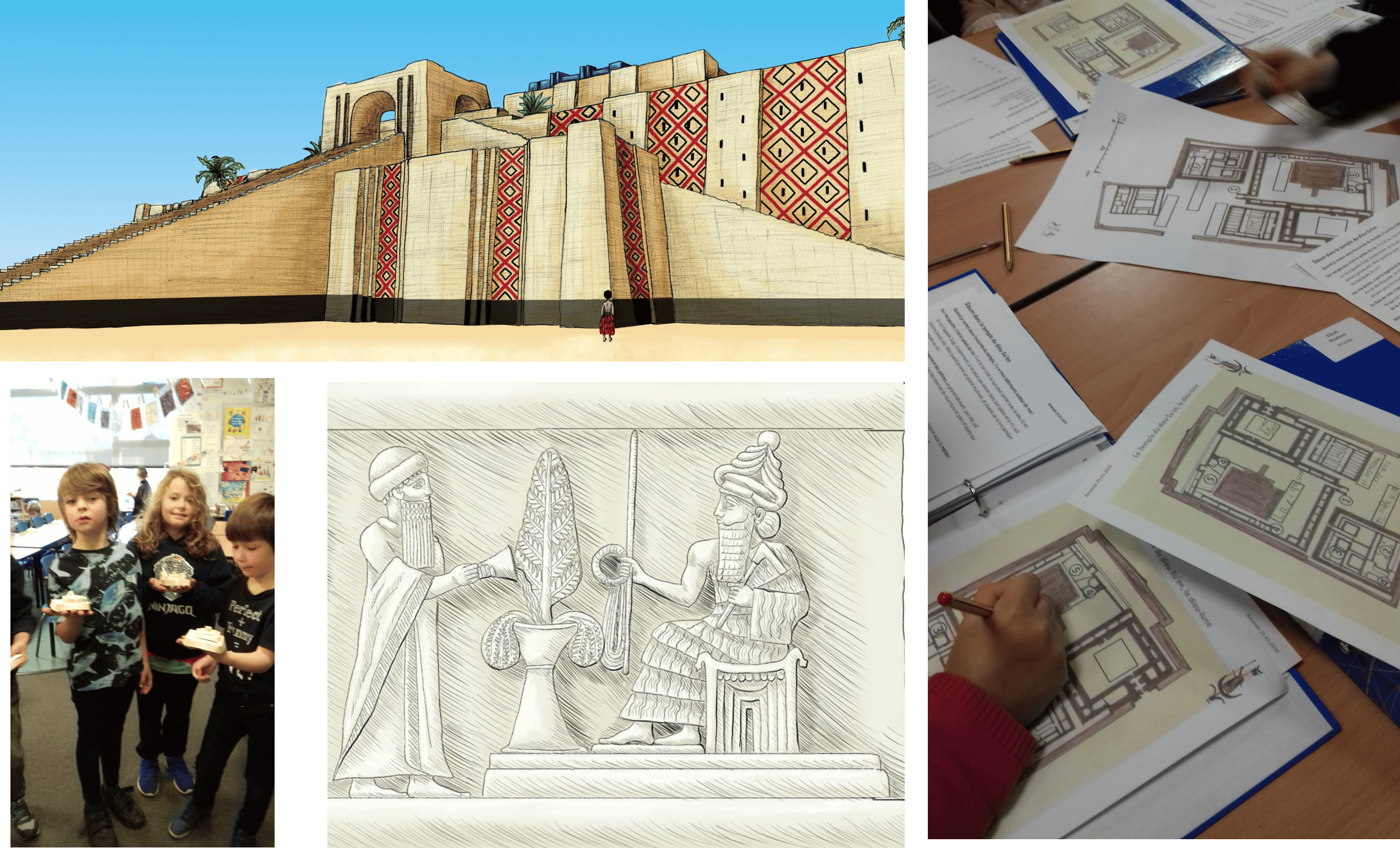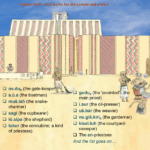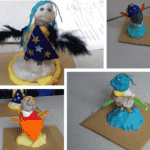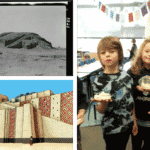
This session focuses on the relationship between Sumerians and their gods, so unfamiliar to us, and how it impacts their religious practices. It opens the children mind to different beliefs and mindsets of ancient civilisations, by bringing their attention on other ways to look at the world and explain it.
✓ All KS2 levels: Year 3 to 6 (material is adapted to different year-levels);
✓ Price: Short workshops: £50 in-person; £25 online; Long workshops: £75 in-person; £50 online
✓ Included: documents for each child (2 pages Pdf to print out)
Sumerian gods and goddesses were “living” amongst human beings and the temple was their “house”.
Their duty was to protect the inhabitants of a city; in exchange, the citizens were “taking care of their gods” on a daily basis, by providing them with all their needs.
Focusing on the temple of Ur, Ekišnugal, children learn how to read an archaeological plan and are introduced to the experience of the Sumerian temples, using recent sensory archaeology studies.
Complementary reading: Ur guidebook: pp. 17-29

Readings, crafts, a short game: activities around gods for all tastes!
Taking care of a Sumerian god!

Temples employed hundreds of people, and not only priests… far from it. The hands-on "Taking care of your god" introduces the children to both temple staff and religious practices in ancient Sumer.
What is the ziqqurrat? Can you visit it?!
What exactly is the ziqqurrat, one of the most famous monuments of Ancient Sumer? The children discover it with a simple craft activity, to complement with readings from the guidebooks (Ur Fascicle, pp. 23-24)!
For the little ones: Fantastic Creatures!

For the (very) little ones (Year 1 and 2): “Fantastic creatures!” Another way to discover Mesopotamian gods and demons, who were described as composite creatures, made of different materials. Possible to link with a presentation of the natural world.

